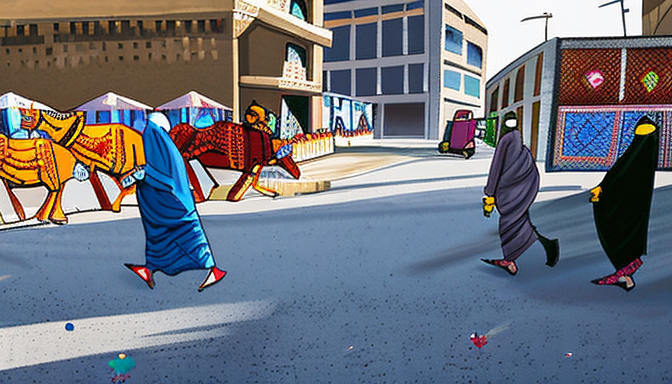Karachi’s story is like a captivating novel, filled with twists and turns. It all began as a humble fishing village along the Arabian Sea. Imagine a time when the shores were lined with fishermen casting their nets, hoping for a bountiful catch. This little settlement, known as Kahreech, was a vital stop for traders navigating the waters. As the years rolled on, Karachi transformed dramatically, especially during the 18th and 19th centuries. Colonial powers, particularly the British, saw the potential in this coastal gem.
As trade routes expanded, Karachi became a bustling hub. The British established a port, which opened the floodgates to commerce and migration. Can you picture the energy of merchants, sailors, and travelers all converging in one place? It was a melting pot of cultures, ideas, and ambitions. The city started to grow, not just in size but also in its diversity. By the late 19th century, Karachi was officially recognized as a city, and its population began to swell.
Fast forward to the 20th century, and Karachi faced new challenges. Rapid urbanization brought both opportunities and hurdles. The city saw waves of migration, especially during the partition of India in 1947. This influx changed the city’s demographics and added layers to its cultural tapestry. Today, Karachi stands as a testament to resilience, showcasing a blend of history and modernity. It’s a city that never sleeps, always evolving, yet deeply rooted in its past.
The Early Years of Karachi
Karachi’s story begins as a humble fishing village, nestled along the coast of the Arabian Sea. Can you imagine? A small community, relying on the ocean for its daily catch. This was the heart of Karachi in the early years, around the 18th century. The city’s strategic location made it a natural hub for trade routes, connecting merchants from different regions. As the village grew, so did its importance.
By the late 18th century, Karachi was starting to attract attention. The British East India Company recognized its potential. They saw a gateway to the riches of the subcontinent. In 1839, the British officially took control, transforming Karachi into a bustling port city. This shift was monumental. The population surged, and the city began to expand rapidly. With new roads and infrastructure, Karachi was no longer just a fishing settlement.
During the 19th century, Karachi became a melting pot of cultures. People from different backgrounds settled here, each bringing their unique traditions and influences. This diversity shaped the city’s identity. The blend of languages, cuisines, and customs created a vibrant tapestry of life. However, it wasn’t all smooth sailing. With growth came challenges: overcrowding, sanitation issues, and political tensions.
In summary, Karachi’s early years were marked by transformation. From a quiet fishing village to a lively trading hub, the city set the stage for its future. The influence of colonial powers and the influx of diverse communities played pivotal roles in shaping what Karachi would eventually become.

Modern Karachi: Growth and Challenges
Karachi, once a humble fishing village, has transformed into a bustling metropolis. This change didn’t happen overnight. It took decades of urbanization and cultural shifts. In the 20th century, Karachi saw a surge in population. People flocked to the city for job opportunities and a better life. This rapid growth, however, came with its own set of challenges.
By the mid-1900s, Karachi was already feeling the strain. The city’s infrastructure struggled to keep up. Roads were congested, and public services were overwhelmed. Imagine trying to fit a large crowd into a small room. That’s what Karachi faced. The city’s landscape was changing, but so were its social dynamics.
With a diverse population, Karachi became a melting pot of cultures. This diversity brought vibrancy but also tension. Different communities often clashed over resources and political power. The 1980s and 1990s were particularly tumultuous, marked by ethnic violence and political instability. Yet, through it all, Karachi’s spirit endured.
Today, Karachi stands as a testament to resilience. The city is not just about challenges; it’s also about innovation. New businesses are emerging, and technology is reshaping daily life. However, the question remains: Can Karachi balance growth with sustainability? The future holds both promise and uncertainty.
In summary, Karachi’s journey is one of transformation. From a fishing village to a major urban center, it reflects the complexities of modern life. As we look ahead, understanding this history is crucial. It shapes not just the city, but the lives of millions who call it home.
Frequently Asked Questions
- What is the historical significance of Karachi?
Karachi holds a rich tapestry of history, evolving from a humble fishing village to a major trade hub. Its strategic location has attracted various cultures and colonial powers, shaping its unique identity.
- How did colonialism impact Karachi’s development?
Colonial powers, particularly the British, significantly influenced Karachi’s infrastructure, economy, and urban planning. This laid the groundwork for its growth into a bustling metropolis, but also introduced challenges that the city grapples with today.
- What are the main socio-economic challenges faced by modern Karachi?
Today, Karachi faces issues like overpopulation, inadequate infrastructure, and economic disparity. These challenges stem from its rapid urbanization, which has outpaced the city’s ability to provide essential services.
- How does Karachi’s cultural diversity manifest?
The city’s cultural diversity is vibrant, with influences from various ethnic groups, languages, and traditions. This melting pot is reflected in its cuisine, festivals, and daily life, making Karachi a unique cultural hub.